Jonas Bokstaller
Enhancing ML Model Interpretability: Leveraging Fine-Tuned Large Language Models for Better Understanding of AI
May 02, 2025Abstract:Across various sectors applications of eXplainableAI (XAI) gained momentum as the increasing black-boxedness of prevailing Machine Learning (ML) models became apparent. In parallel, Large Language Models (LLMs) significantly developed in their abilities to understand human language and complex patterns. By combining both, this paper presents a novel reference architecture for the interpretation of XAI through an interactive chatbot powered by a fine-tuned LLM. We instantiate the reference architecture in the context of State-of-Health (SoH) prediction for batteries and validate its design in multiple evaluation and demonstration rounds. The evaluation indicates that the implemented prototype enhances the human interpretability of ML, especially for users with less experience with XAI.
Fast Single-Core K-Nearest Neighbor Graph Computation
Dec 13, 2021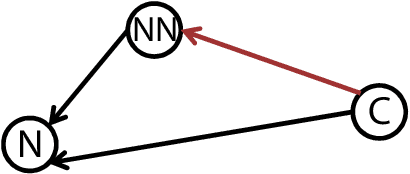
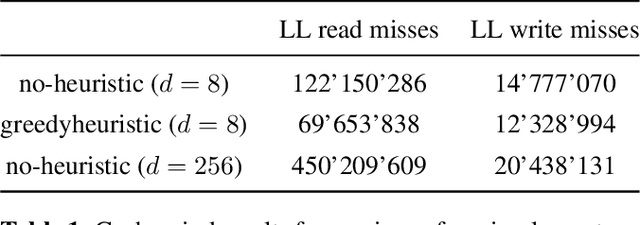
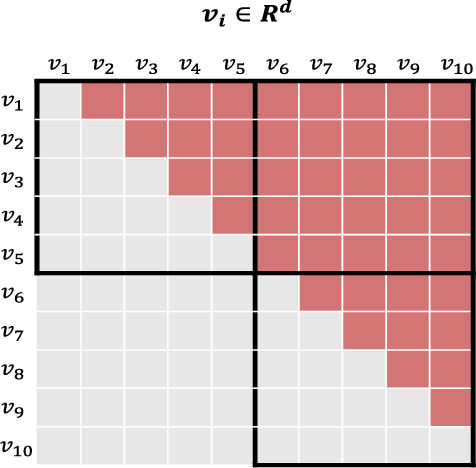
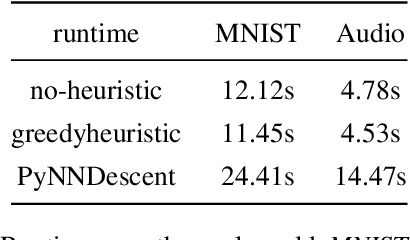
Abstract:Fast and reliable K-Nearest Neighbor Graph algorithms are more important than ever due to their widespread use in many data processing techniques. This paper presents a runtime optimized C implementation of the heuristic "NN-Descent" algorithm by Wei Dong et al. for the l2-distance metric. Various implementation optimizations are explained which improve performance for low-dimensional as well as high dimensional datasets. Optimizations to speed up the selection of which datapoint pairs to evaluate the distance for are primarily impactful for low-dimensional datasets. A heuristic which exploits the iterative nature of NN-Descent to reorder data in memory is presented which enables better use of locality and thereby improves the runtime. The restriction to the l2-distance metric allows for the use of blocked distance evaluations which significantly increase performance for high dimensional datasets. In combination the optimizations yield an implementation which significantly outperforms a widely used implementation of NN-Descent on all considered datasets. For instance, the runtime on the popular MNIST handwritten digits dataset is halved.
Model Bias in NLP -- Application to Hate Speech Classification using transfer learning techniques
Oct 11, 2021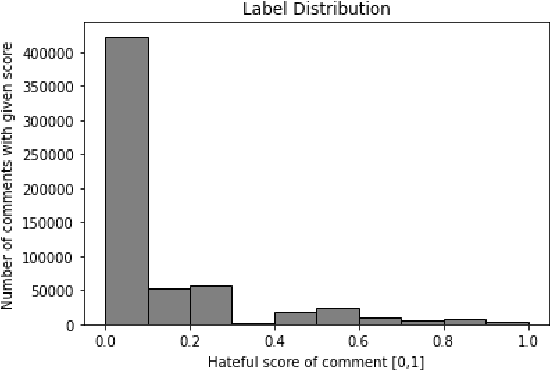

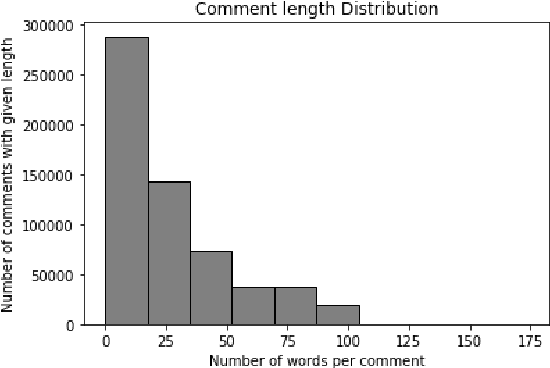
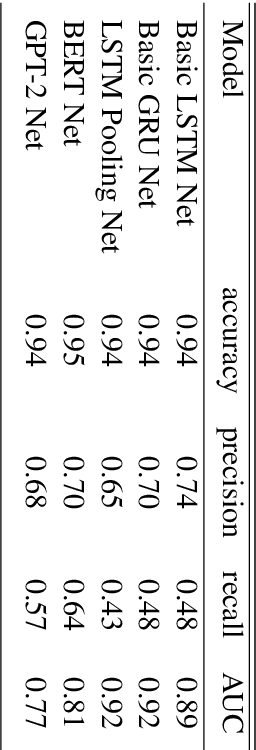
Abstract:In this paper, a BERT based neural network model is applied to the JIGSAW data set in order to create a model identifying hateful and toxic comments (strictly seperated from offensive language) in online social platforms (English language), in this case Twitter. Three other neural network architectures and a GPT-2 model are also applied on the provided data set in order to compare these different models. The trained BERT model is then applied on two different data sets to evaluate its generalisation power, namely on another Twitter data set and the data set HASOC 2019 which includes Twitter and also Facebook comments; we focus on the English HASOC 2019 data. In addition, it can be shown that by fine-tuning the trained BERT model on these two data sets by applying different transfer learning scenarios via retraining partial or all layers the predictive scores improve compared to simply applying the model pre-trained on the JIGSAW data set. With our results, we get precisions from 64% to around 90% while still achieving acceptable recall values of at least lower 60s%, proving that BERT is suitable for real use cases in social platforms.
Dynamic Gesture Recognition
Sep 29, 2021



Abstract:The Human-Machine Interaction (HMI) research field is an important topic in machine learning that has been deeply investigated thanks to the rise of computing power in the last years. The first time, it is possible to use machine learning to classify images and/or videos instead of the traditional computer vision algorithms. The aim of this paper is to build a symbiosis between a convolutional neural network (CNN) and a recurrent neural network (RNN) to recognize cultural/anthropological Italian sign language gestures from videos. The CNN extracts important features that later are used by the RNN. With RNNs we are able to store temporal information inside the model to provide contextual information from previous frames to enhance the prediction accuracy. Our novel approach uses different data augmentation techniques and regularization methods from only RGB frames to avoid overfitting and provide a small generalization error.
Segmentation of Roads in Satellite Images using specially modified U-Net CNNs
Sep 29, 2021



Abstract:The image classification problem has been deeply investigated by the research community, with computer vision algorithms and with the help of Neural Networks. The aim of this paper is to build an image classifier for satellite images of urban scenes that identifies the portions of the images in which a road is located, separating these portions from the rest. Unlike conventional computer vision algorithms, convolutional neural networks (CNNs) provide accurate and reliable results on this task. Our novel approach uses a sliding window to extract patches out of the whole image, data augmentation for generating more training/testing data and lastly a series of specially modified U-Net CNNs. This proposed technique outperforms all other baselines tested in terms of mean F-score metric.
 Add to Chrome
Add to Chrome Add to Firefox
Add to Firefox Add to Edge
Add to Edge